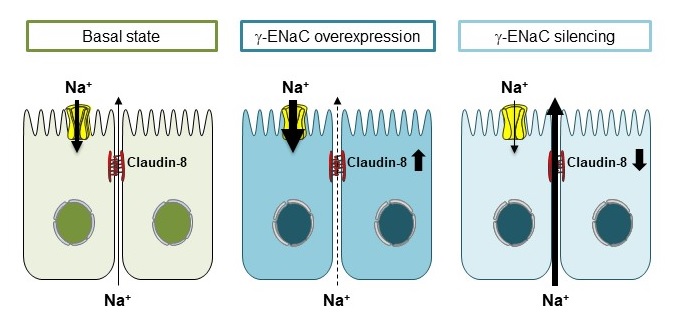Tight junctions are not just clips
Tight junctions seal adjacent epithelial cells in a narrow band just beneath their apical surface. These junctions consist of a network of proteins, mainly composed of claudins and occludins. They limit the passage of molecules and ions through the space between cells. In renal collecting duct, sodium reabsorption is the result of transcellular transport through cells and paracellular transport, between cells. In this particular tissue, tight junctions seem to avoid a backflow of reabsorbed sodium. However, the fact that tight junctions are not just clips but dynamic elements, remains an open question.
Tight junctions are dynamic
In a recent study published in the Journal of the American Society of Nephrology, scientists from Prof. Eric Feraille group have evidenced for the first time that tight junctions are regulated upon physiological needs: they are not just clips or holes. Their experiments conducted in collecting duct cells highlighted a novel coordination between reabsorption of sodium in epithelial cells through ENaC channels and tightening up of tight junctions to avoid a backflow between cells.

Schematic representation of the regulation of tight junctions’ permeability by sodium reabsorption in renal collecting duct cells © adapted from Sassi et al. JASN
New open avenues
These novel findings about kidneys might have applications for the epithelia of all organs. Understanding better how tight junctions are regulated might also open new therapeutic avenues to treat severe diseases such as renal tubular acidosis.
23 Apr 2020